This post may contain affiliate links. Please read our disclosure policy.
This quick and easy pickled daikon recipe is crunchy, refreshing, and full of flavor! Made with 6 simple ingredients, these Taiwanese-style daikon pickles have a tangy, sweet, and salty flavor.
They’re perfect to snack on or to add tangy flavor and crunch to your favorite dishes. Toss them on salads, banh mi sandwiches, and wraps or pair them with rich, hearty foods for a refreshing contrast.
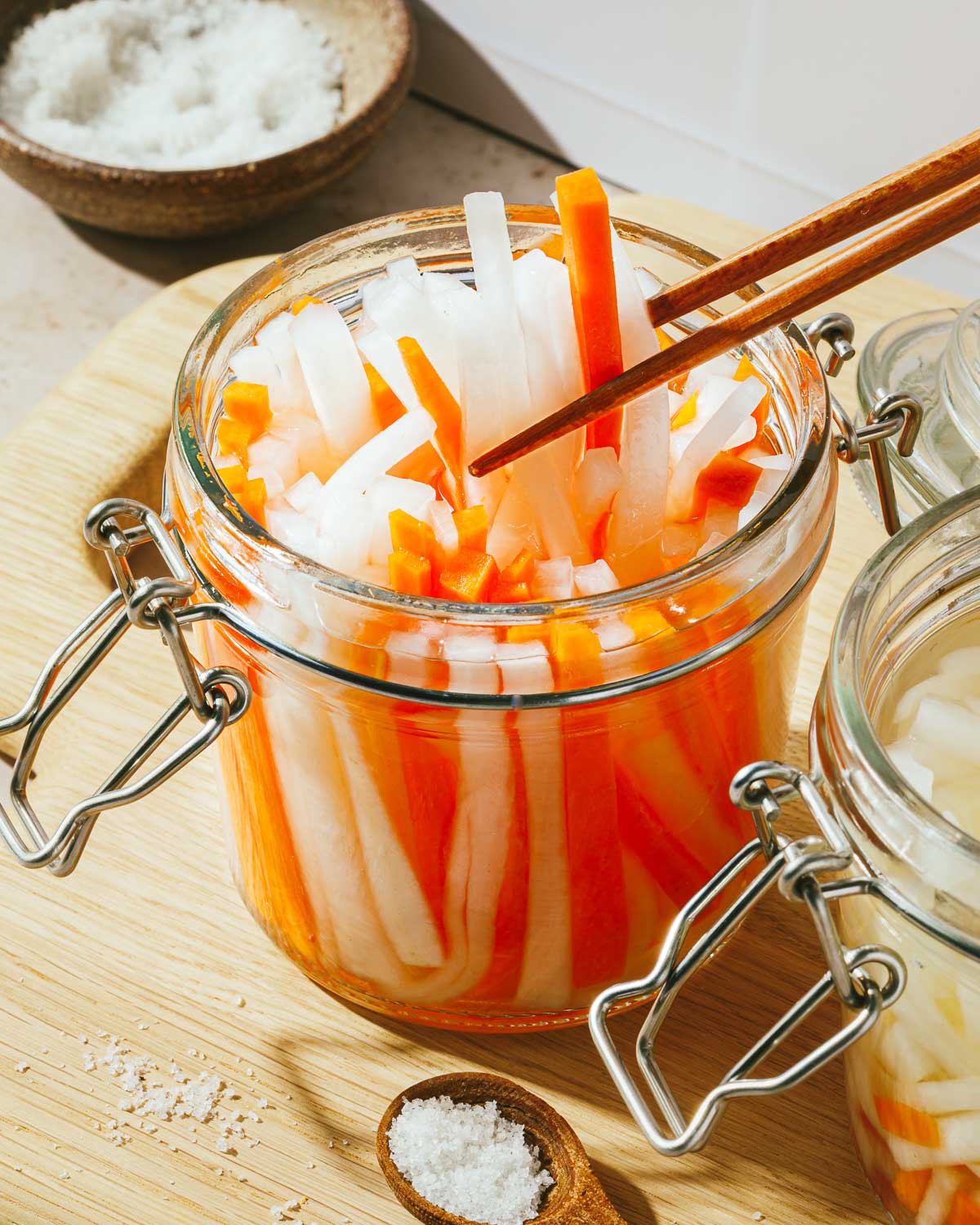
Table of Contents
What is pickled daikon?
Taiwanese daikon pickles are crisp, slightly tangy, and just a little sweet. Unlike sharp, salty pickles, this version is bright and refreshing, making it a perfect side to balance out rich or savory dishes.
Different countries have their own take on pickling this long white radish. Korean danmuji is sweeter, saltier, and often dyed yellow. Japanese pickled daikon (takuan or tsukemono) can be lightly salted and mildly tangy or deeply fermented for a stronger umami flavor.
The Taiwanese version is more balanced—naturally crisp with a gentle sweetness, without being too salty or overpowering.
Ingredients
You only need a few simple ingredients to make these crunchy daikon radish pickles! The brine is balanced with just the right touch of sweetness, salt, and tang.
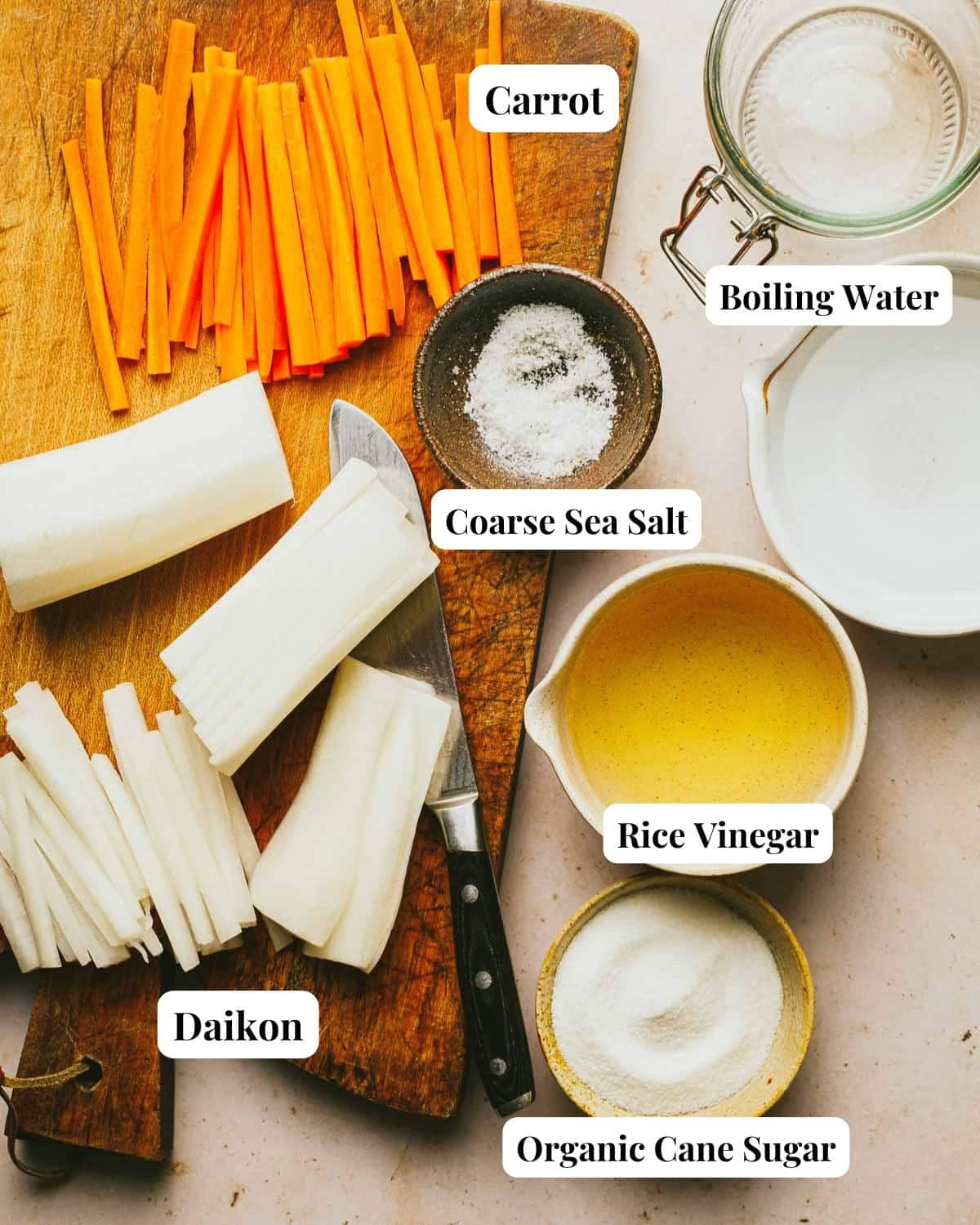
- Daikon: Select one large daikon root that is firm with a smooth surface and slight shine. Avoid bruised or limp daikons.
- Carrot: A medium carrot adds a pop of color to the white pickled radish.
- Coarse Sea Salt: Helps draw out excess moisture from the vegetables, keeping them crisp and allowing them to absorb the brine better.
- Boiling Water: To help the sugar dissolve quickly in pickling liquid.
- Organic Cane Sugar: To balance the acidity from the vinegar for a well-rounded flavor.
- Substitution: Coconut brown sugar can be used instead. It gives the pickles a light brown color but keeps the same level of sweetness.
- Rice Vinegar: Brings a slightly sweet and classic tangy flavor to the brine.
- Substitution: Apple cider vinegar works too. Add a pinch of sugar to mimic the sweetness of rice wine vinegar.
How to make daikon radish pickles
Making radish pickles is simple——just a little prep work, then let the pickles sit for 24 hours to develop flavor.
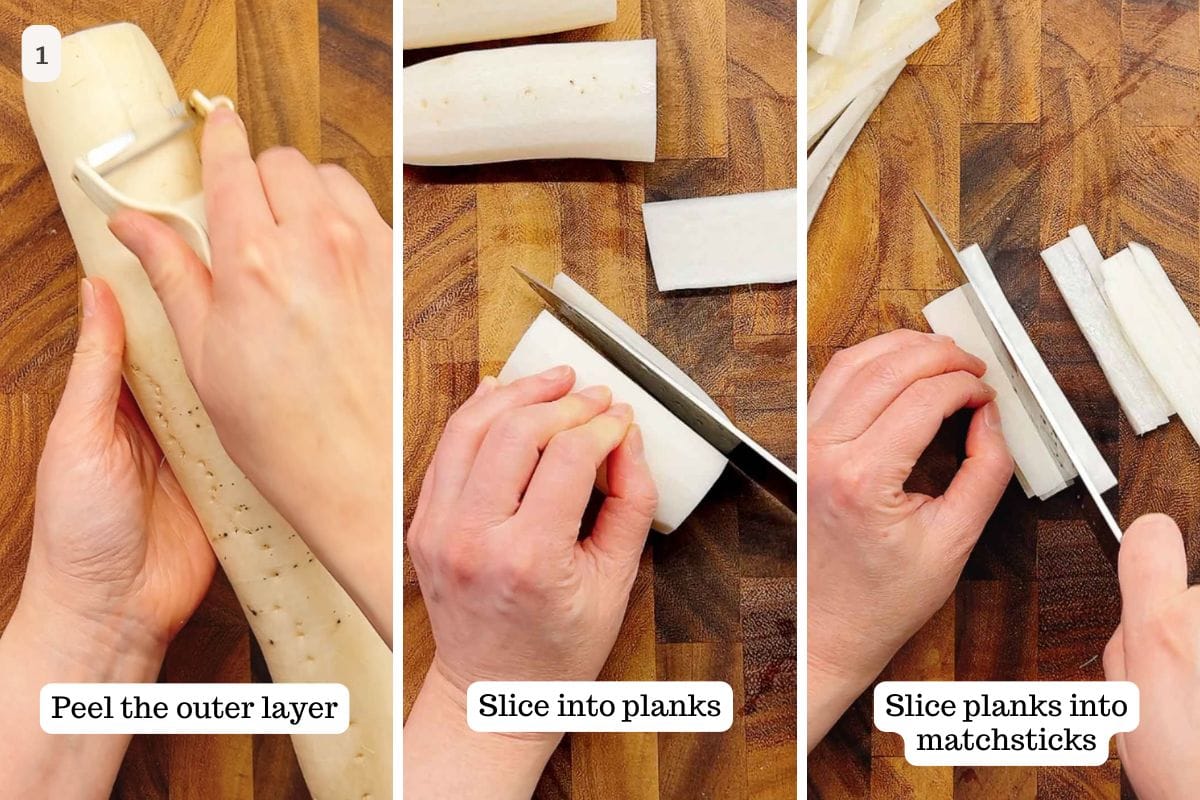
- Prepare Daikon and Carrots: Wash and peel the daikon and carrots. Cut into matchsticks approximately 4-inch long and about ⅛-inch thick.
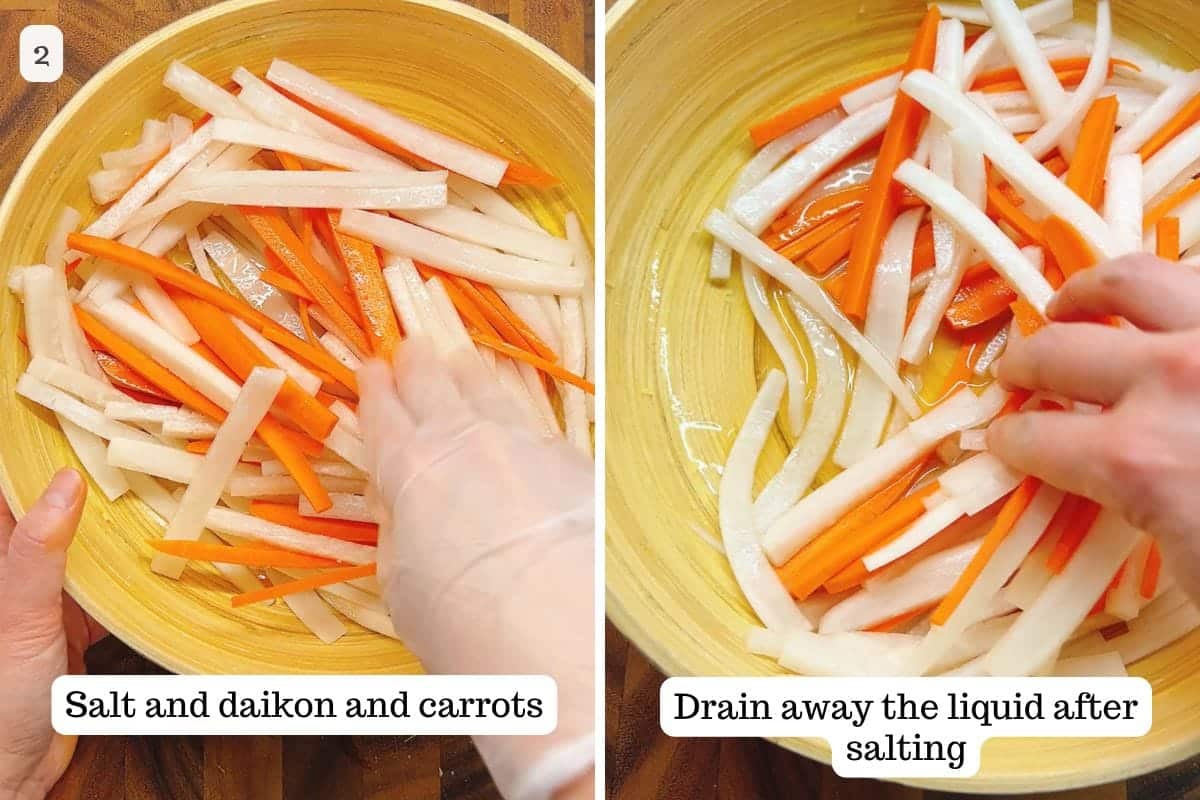
- Salt the Vegetables: Place the veggie matchsticks in a large bowl and sprinkle with salt. The salt will not only season the vegetables but also draw excess moisture. After 30 minutes, drain the liquid from the bowl but do not rinse.
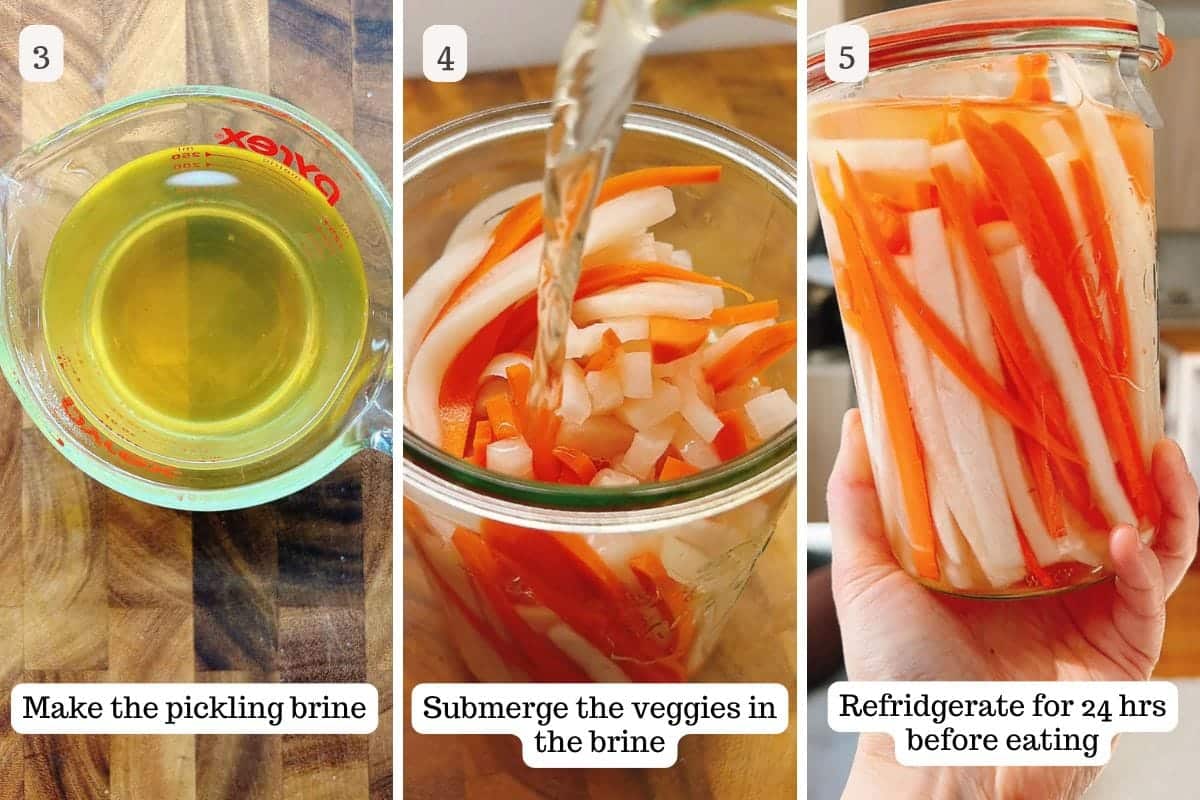
- Make Pickling Brine: Add the sugar to a large heat-safe measuring cup. Boil water and pour over the sugar to dissolve it. Let the mixture cool before adding the vinegar. Set aside.
- Pickle the Veggies: Transfer daikon and carrots into a clean, sterilized glass jar. Pour the room temperature vinegar mixture over the veggies so they are fully submerged in the brine.
- Store: Store the sealed jar in the fridge for at least 24 hours so the flavors develop. Consume the pickles within 2 weeks for the best flavor.
Good to know
Tip on the odor: It’s normal for daikon radish pickles to develop an odor over time—that’s just the sulfur compounds in the radish doing their thing. To keep it in check:
- Store the jar tightly sealed in the fridge.
- Before serving, let the container sit open for 10-15 minutes to help the smell fade.
How long does pickled radish last?
When stored properly in an airtight glass container in the refrigerator, your pickles can last 2 weeks. Make sure the daikon is submerged in the brine and always use a clean utensil when serving.
How to use daikon pickles?
Crunchy pickled daikon radish is great as garnish on wraps, salads, and sandwiches. Because they are cleansing and refreshing, they pair especially well with rich, meaty foods.
- Grilled Meats and Seafood: They’re perfect on these light and refreshing lettuce banh mi wraps, my Vietnamese lemongrass chicken noodle salad, or shrimp summer rolls.
- Rich Flavorful Foods: Try them with my Instant Pot Taiwanese meat sauce, ground pork stir fry with cabbage and bok choy, this authentic Taiwanese lu rou fan with braised pork, or my Taiwanese braised minced pork and rice.
What else can you make with daikon radish?
Daikon radish is a popular ingredient throughout Asia. In oriental radish recipes, daikon is most commonly used in soups, like daikon soup and pork rib soup with daikon.
You can also simmer it with or without meat—my simmered daikon is a reader favorite! Or, get creative and use thin slices as wrappers for daikon dumplings.
ChihYu’s tips for success
- Preparing the Daikon: Peel the skin, as daikon is typically used without it. Then, slice it into equal-sized matchsticks—this helps them pickle evenly and stay crisp.
- Don’t Skip the Salt Step: Salting the vegetables draws out moisture, which helps them stay crunchy in the brine. Be sure to drain the liquid after 30 minutes, but don’t rinse off the salt!
- Use hot boiling water: To help the sugar dissolve in the brine evenly and quickly.
- Pickling Time: Allow the daikon to pickle for at least 24 hours so the flavors can develop. They’re best enjoyed within two weeks.
- Storage: Store in an airtight glass container in the fridge. To prevent bacteria, make sure the pickles are submerged in the brine and always use a clean utensil to serve them.
More Asian pickled vegetables you might like
If you enjoy this Chinese pickled radish recipe, give some of my other pickled veggies a try!
- Asian pickled cucumbers with a 10-minute marinade (sweet, tangy, and a bit spicy).
- Pickled garlic with Sichuan peppercorns (Chinese-style, garlicky and tangy).
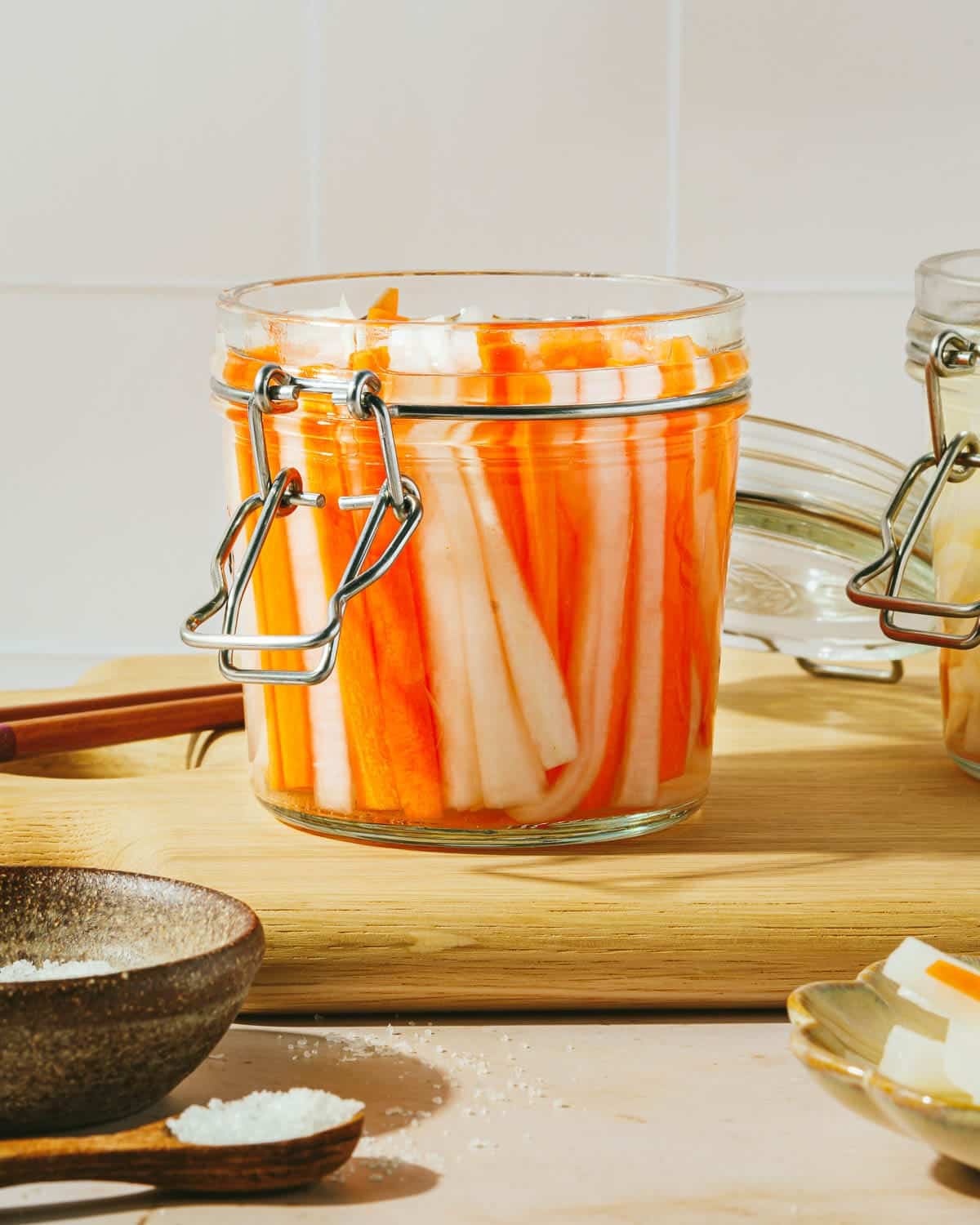
Pickled daikon radish recipe
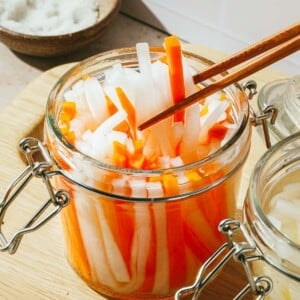
Video
Ingredients
- 13 oz daikon one large
- 3.5 oz carrot one medium
- 1 tsp coarse sea salt
- ⅔ cup hot boiling water
- ⅓ cup organic cane sugar
- ⅔ cup rice vinegar
Instructions
- Prepare the Vegetables: Use a vegetable peeler to peel the daikon and carrots. For matchsticks, slice each vegetable into approximately 4-inch (10 cm) long pieces, about ⅛-inch (0.3 cm) thick. To do this, cut the daikon and carrots into 4-inch sections, then slice each section into thin planks. Stack the planks and cut them lengthwise into matchstick-size strips.
- Salt the Vegetables: Place the daikon and carrot matchsticks in a large bowl and sprinkle with the coarse sea salt. Toss to coat evenly and let sit for 30 minutes to draw out excess moisture. After 30 minutes, drain the liquid but do not rinse off the salt.
- Prepare the Pickling Brine: In a large (2 cup/500 ml) heat proof measuring cup, add the hot boiling water and sugar, Stir to dissolve the sugar evenly. Once the mixture is no longer hot, add-in the vinegar. Set aside the brine to cool to room temperature.
- Pickle the Vegetables: After salting, there will be a pool of water in the bowl. Discard that. Transfer the salted and drained daikon and carrots into a clean, sterilized glass jar. Pour the cooled brine over the vegetables, making sure they are fully submerged. Press the vegetables down gently to keep them beneath the brine.
- Refrigerate: Seal the jar and refrigerate for at least 24 hours to allow the flavors to develop. For the best flavor and texture, consume the pickles within 2 weeks.
- Storage: These pickled daikon and carrots will keep well in the refrigerator for up to 2 weeks. Ensure the vegetables are always submerged in the brine to maintain freshness and flavor.
Notes
- Can also use coconut brown sugar in the same quantity. (i.e. ⅔ cup cane sugar = ⅔ cup coconut brown sugar). The only difference is the brine and pickle color will be light brown.
- Storage: Pickled daikon, when stored properly (in an airtight glass container) in the refrigerator, can last 2 weeks. Ensure the daikon remains submerged in its pickling liquid and always use a clean utensil when handling to maintain its quality.
- Rice vinegar substitute: When substituting rice vinegar in pickled daikon recipes, apple cider vinegar is the closest match due to its similar sweet-to-sour balance. Both vinegars are mild and share a subtle sweetness, making apple cider vinegar an excellent alternative.
- To use apple cider vinegar as a substitute, replace rice vinegar in a 1:1 ratio. If you prefer a slightly sweeter profile, consider adding a pinch of sugar to the brine to closely mimic the flavor of rice vinegar.
- Odor: Pickled daikon often gets a strong, pungent smell after a few days—that’s just the sulfur compounds in the radish doing their thing. To keep the odor in check, store it in a tightly sealed container in the fridge. Before serving, let the container sit open for 10-15 minutes to help the smell fade. Don’t worry, though—the flavor is much milder and super tasty!
Nutrition
Nutrition information is automatically calculated, so should only be used as an approximation.
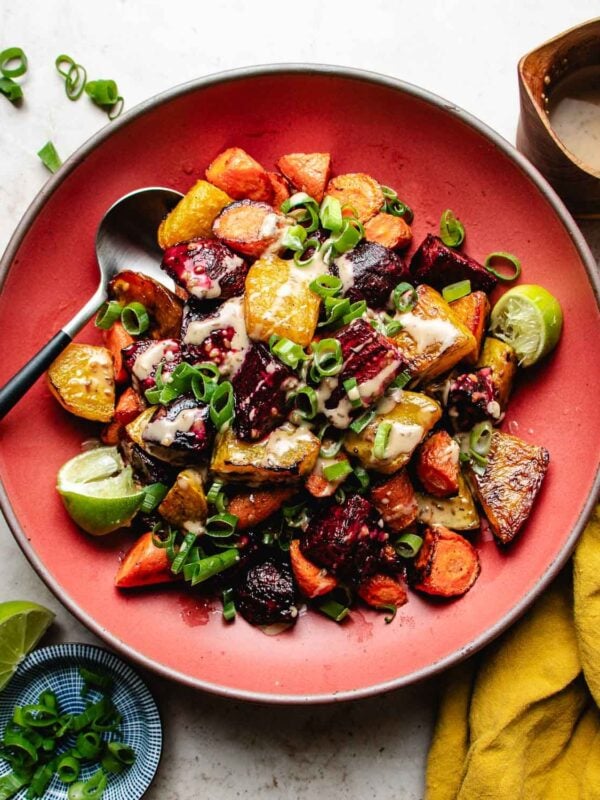
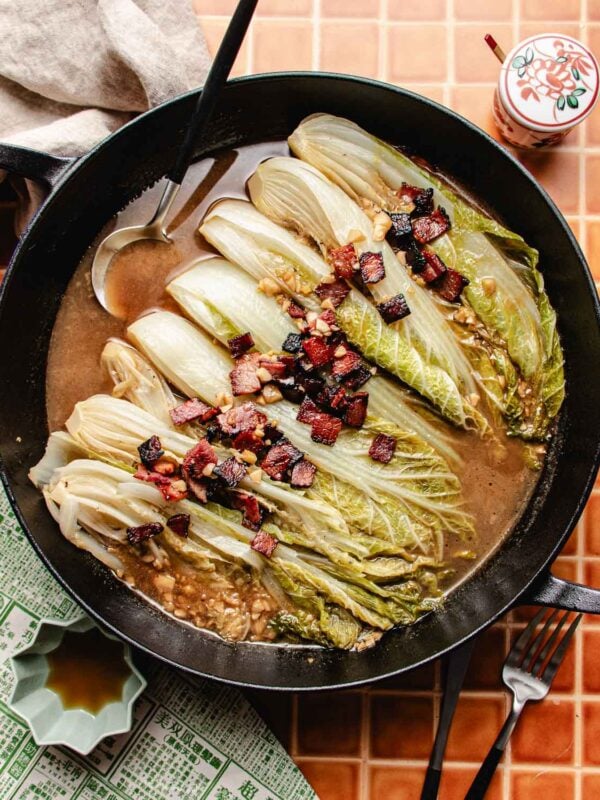
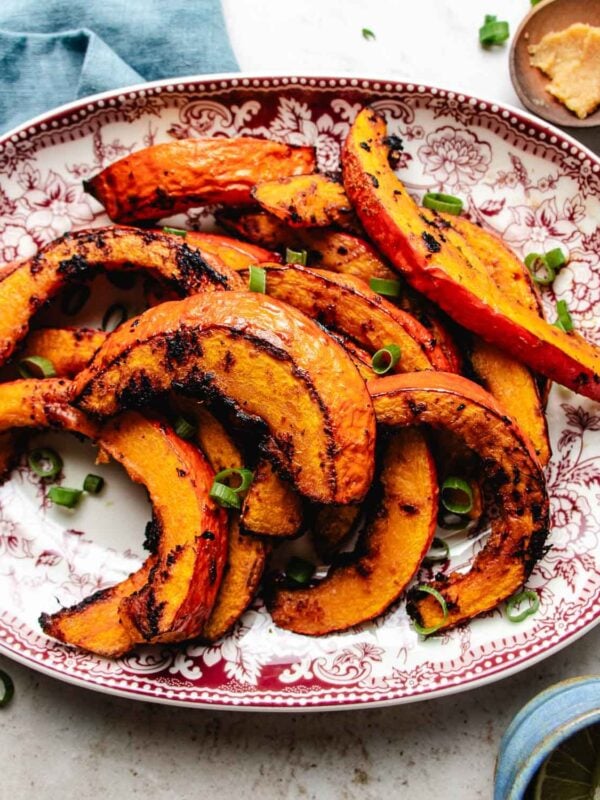
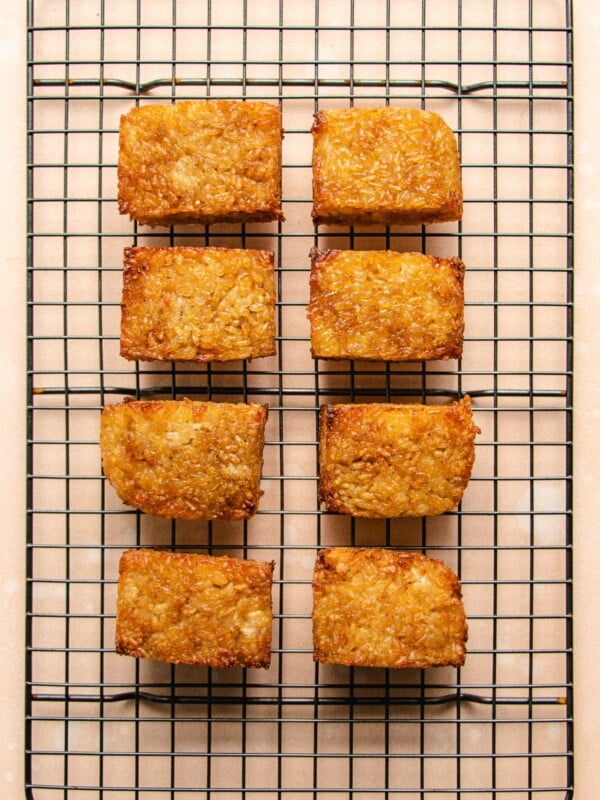
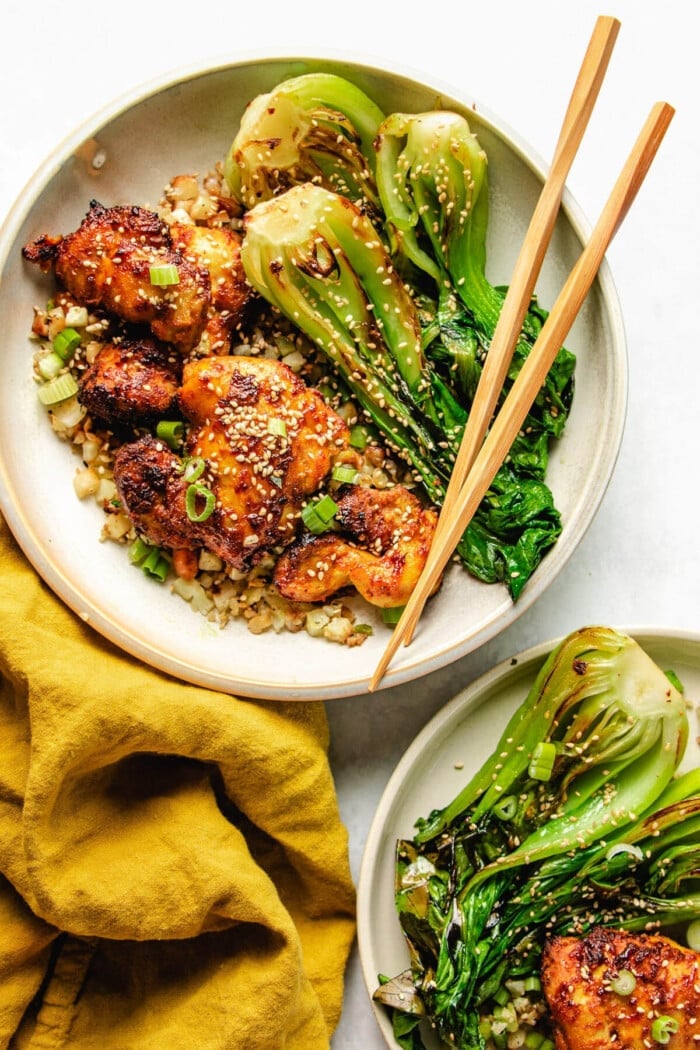








Made this 2 days ago and am so happy!! A taste of home!!!!! In Hong Kong, which is where I’m from, there’s also a spicy version with chopped chillies. My husband and daughter love it! Will definitely make this from now on and introduce it to my friends too!
Yay! So happy to hear! Love Hong Kong!